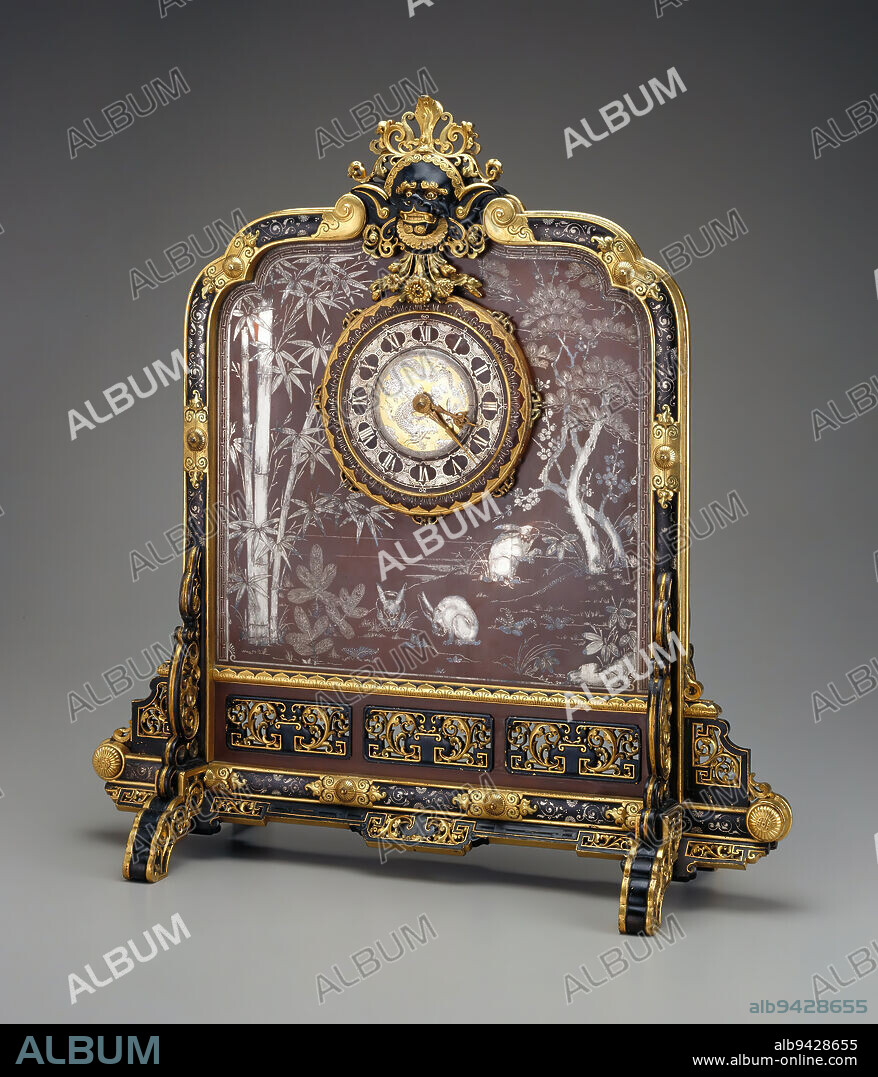alb9428655
Clock, c. 1869, Emile-Auguste Reiber; Maker: Christofle, French, 1826-1893, 20 1/2 x 19 1/2 x 7 3/4 in. (52.07 x 49.53 x 19.69 cm)6 1/2 x 2 3/8 x 7/8 in. (16.51 x 6.03 x 2.22 cm) (pendulum), Silver, bronze, copper, gilt, pigment, France, 19th century, This magnificent clock illustrates some of the earliest Japanese influences on European decorative arts following the reopening of Japan to the Western world in 1854. The clock combines European and Asian iinfluences. Its overall form is derived from an 18th-century Chinese table screen; the face and whimsical beast above it is inspired by Tibetan mandalas; and the silver inlay depicts scenes taken from Japanese paintings, lacquerware, and ceramics.

|
Zu einem anderen Lightbox hinzufügen |
|
Zu einem anderen Lightbox hinzufügen |



Haben Sie bereits ein Konto? Anmelden
Sie haben kein Konto? Registrieren
Dieses Bild kaufen.
Nutzung auswählen:

Untertitel:
Siehe automatische Übersetzung
Clock, c. 1869, Emile-Auguste Reiber; Maker: Christofle, French, 1826-1893, 20 1/2 x 19 1/2 x 7 3/4 in. (52.07 x 49.53 x 19.69 cm)6 1/2 x 2 3/8 x 7/8 in. (16.51 x 6.03 x 2.22 cm) (pendulum), Silver, bronze, copper, gilt, pigment, France, 19th century, This magnificent clock illustrates some of the earliest Japanese influences on European decorative arts following the reopening of Japan to the Western world in 1854. The clock combines European and Asian iinfluences. Its overall form is derived from an 18th-century Chinese table screen; the face and whimsical beast above it is inspired by Tibetan mandalas; and the silver inlay depicts scenes taken from Japanese paintings, lacquerware, and ceramics.
Bildnachweis:
Album / quintlox
Freigaben (Releases):
Model: Nein - Eigentum: Nein
Rechtefragen?
Rechtefragen?
Bildgröße:
2693 x 3141 px | 24.2 MB
Druckgröße:
22.8 x 26.6 cm | 9.0 x 10.5 in (300 dpi)
 Pinterest
Pinterest Twitter
Twitter Facebook
Facebook Link kopieren
Link kopieren Email
Email
